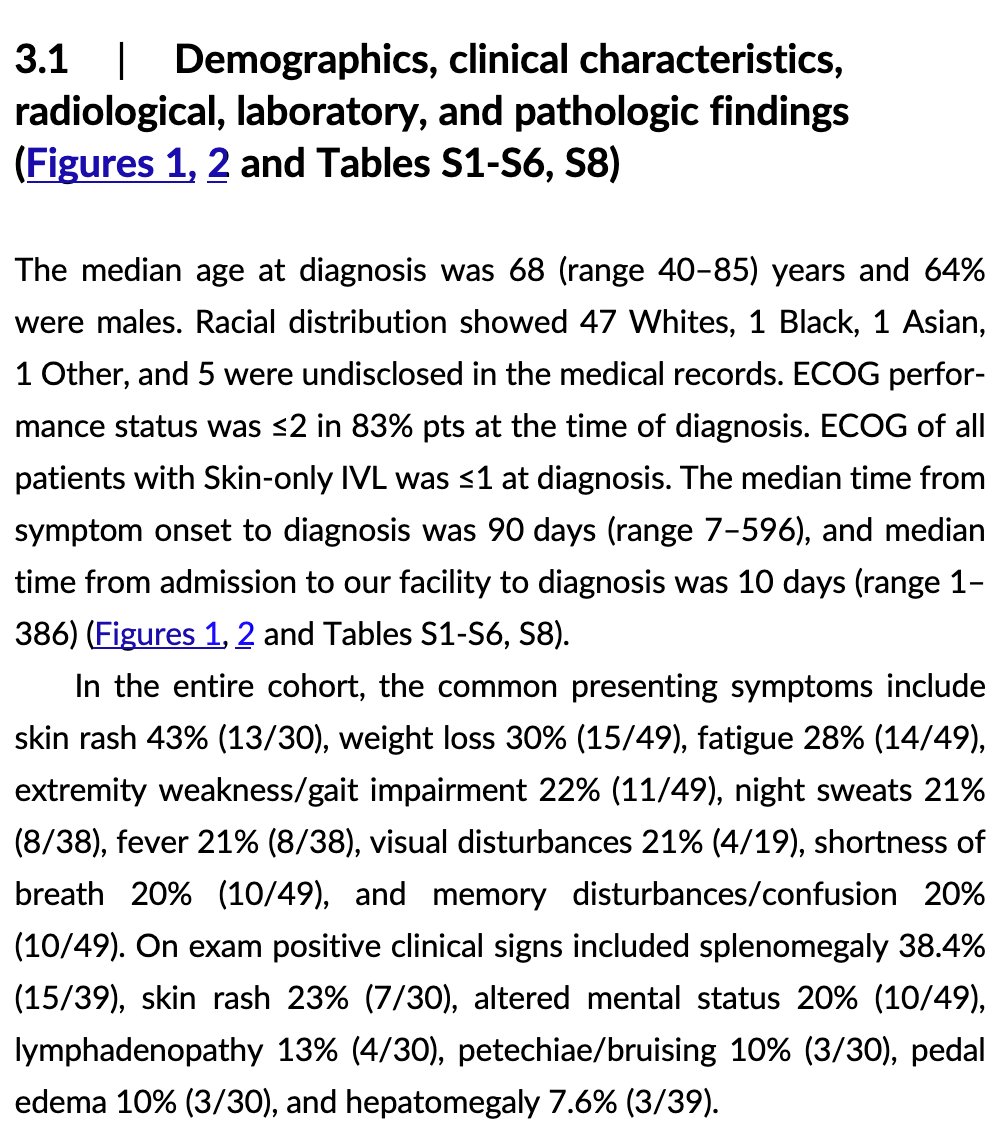1/13
Why does adrenal insufficiency (particularly adrenal crisis) lead to hypotension?
I don't think of glucocorticoids as "pressors" and yet when they're lacking patients are at great risk for shock.
Let's have a look.
Why does adrenal insufficiency (particularly adrenal crisis) lead to hypotension?
I don't think of glucocorticoids as "pressors" and yet when they're lacking patients are at great risk for shock.
Let's have a look.
2/
Hypotension has long been associated with adrenal insufficiency.
For example, one report of 108 cases of Addison's Disease (i.e., primary adrenal insufficiency) found that:
⚡️88% of patients presented with hypotension
PDF: t.ly/aDzv
Hypotension has long been associated with adrenal insufficiency.
For example, one report of 108 cases of Addison's Disease (i.e., primary adrenal insufficiency) found that:
⚡️88% of patients presented with hypotension
PDF: t.ly/aDzv

3/
In primary adrenal insufficiency (PAI), hypotension is partly due to volume depletion related to mineralocorticoid deficiency.
But even in PAI the hemodynamic profile isn't simply ↓cardiac output from ↓venous return (i.e., volume depletion).
PDF: t.ly/Ooej
In primary adrenal insufficiency (PAI), hypotension is partly due to volume depletion related to mineralocorticoid deficiency.
But even in PAI the hemodynamic profile isn't simply ↓cardiac output from ↓venous return (i.e., volume depletion).
PDF: t.ly/Ooej

4/
And patients with secondary adrenal insufficiency aren't lacking in mineralocorticoids and still experience adrenal crisis.
Something else is going on in both primary and secondary adrenal insufficiency leading to hypotension.
PDF: t.ly/qmnLf
And patients with secondary adrenal insufficiency aren't lacking in mineralocorticoids and still experience adrenal crisis.
Something else is going on in both primary and secondary adrenal insufficiency leading to hypotension.
PDF: t.ly/qmnLf

5/
Although there are many phenotypes of hypotension in adrenal insufficiency, distributive shock with decreased systemic vascular resistance is common.
This is just one case report, of many. Tweet 3 shows other examples.
PDF: t.ly/PsCd
Although there are many phenotypes of hypotension in adrenal insufficiency, distributive shock with decreased systemic vascular resistance is common.
This is just one case report, of many. Tweet 3 shows other examples.
PDF: t.ly/PsCd

6/
One key observation:
🔑 Patients with adrenal insufficiency have LOW levels of epinephrine.
And this is despite intact catecholamine-producing chromaffin cells. It appears cortisol plays a role in epinephrine homeostasis.
PDF: t.ly/5qGp
One key observation:
🔑 Patients with adrenal insufficiency have LOW levels of epinephrine.
And this is despite intact catecholamine-producing chromaffin cells. It appears cortisol plays a role in epinephrine homeostasis.
PDF: t.ly/5qGp

7/
To understand how cortisol ensures adequate epinephrine levels we must review catecholamine synthesis.
Nearly all epinephrine is synthesized within the adrenals from norepinephrine by the enzyme phenylethanolamine N-methyltransferase (PNMT).
PDF: t.ly/fybH
To understand how cortisol ensures adequate epinephrine levels we must review catecholamine synthesis.
Nearly all epinephrine is synthesized within the adrenals from norepinephrine by the enzyme phenylethanolamine N-methyltransferase (PNMT).
PDF: t.ly/fybH

8/
Early experiments demonstrated that PNMT levels fall after hypophysectomy and dexamethasone restores the lost activity.
🔑Conclusion: generation of epinephrine is regulated by glucocorticoids!
PDF: t.ly/DV1n
Early experiments demonstrated that PNMT levels fall after hypophysectomy and dexamethasone restores the lost activity.
🔑Conclusion: generation of epinephrine is regulated by glucocorticoids!
PDF: t.ly/DV1n

9/
As with other foci, glucocorticoids stimulate the gene expression of PNMT.
In one study dexamethasone increased PNMT gene transcription 2.3-fold.
PDF: t.ly/NBvJ
As with other foci, glucocorticoids stimulate the gene expression of PNMT.
In one study dexamethasone increased PNMT gene transcription 2.3-fold.
PDF: t.ly/NBvJ

10/
There are other explanations for why adrenal insufficiency (AI) leads to hypotension. For example:
🔑Dexamethasone leads to increased expression of α1 receptors
This may partly explain why AI commonly presents with distributive shock.
PDF: t.ly/pnpZ
There are other explanations for why adrenal insufficiency (AI) leads to hypotension. For example:
🔑Dexamethasone leads to increased expression of α1 receptors
This may partly explain why AI commonly presents with distributive shock.
PDF: t.ly/pnpZ

11/
Glucocorticoids also:
↓ COMT and MAO leading to ↓ epinephrine degradation
↑ β receptors leading to enhanced sensitivity to catecholamines
Etc.
In short: they do A LOT.
PDF: t.ly/QqqE
Glucocorticoids also:
↓ COMT and MAO leading to ↓ epinephrine degradation
↑ β receptors leading to enhanced sensitivity to catecholamines
Etc.
In short: they do A LOT.
PDF: t.ly/QqqE
12/
The interaction between glucocorticoids and catecholamines demonstrates well the complexity of these stress hormones.
When one is lacking or in excess, the others are also affected.
The interaction between glucocorticoids and catecholamines demonstrates well the complexity of these stress hormones.
When one is lacking or in excess, the others are also affected.
13/13
🔸Adrenal insufficiency is associated with decreased epinephrine
🔸PNMT synthesizes epinephrine and is regulated by glucocorticoids
🔸In adrenal insufficiency, PNMT activity decreases, leading to decreased epinephrine and one mechanism of hypotension
🔸Adrenal insufficiency is associated with decreased epinephrine
🔸PNMT synthesizes epinephrine and is regulated by glucocorticoids
🔸In adrenal insufficiency, PNMT activity decreases, leading to decreased epinephrine and one mechanism of hypotension
• • •
Missing some Tweet in this thread? You can try to
force a refresh

















